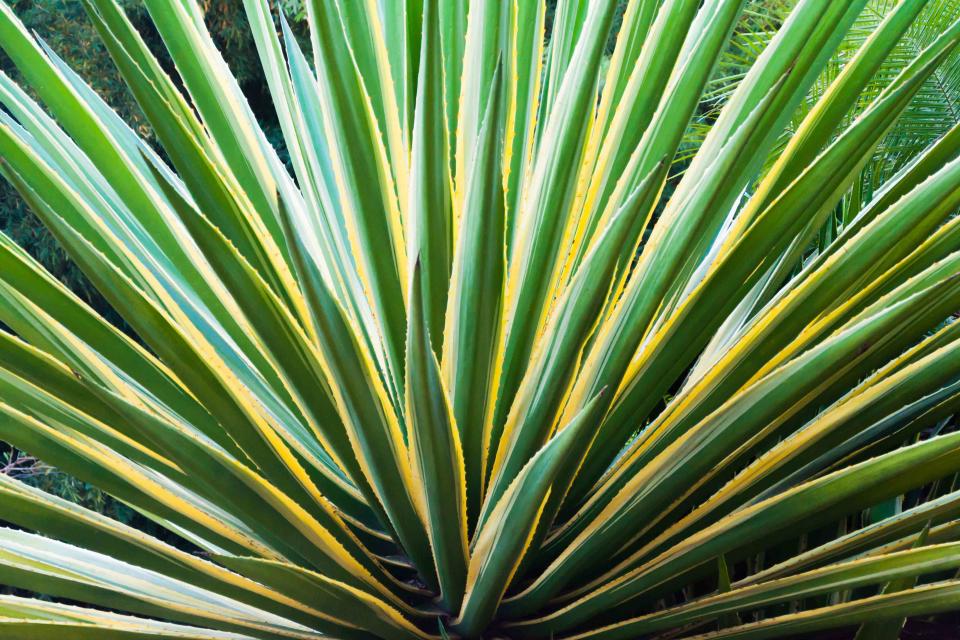If You Love Tequila, Try Bacanora
Get to know this agave spirit, which falls somewhere between tequila and mezcal.

Flavio Coelho / Getty Images
When it comes to agave spirits, tequila tends to get top billing. Understandable — the spirit plays a starring role in margaritas, palomas, and other classic cocktails. But if you’re only sipping tequila, you’re missing out on the beauty of bacanora, a singular agave spirit made in the Mexican state of Sonora.
“Bacanora is made from the distillation of agave angustifolia, a species of agave known colloquially as Yaquiana or Pacifica,” says Gabriela Lozada, a Pujol veteran and the bar manager of Brujas in Mexico City. Its flavor profiles fall somewhere between tequila and mezcal –– slightly savory, earthy, elegant, and extremely representative of the land it is made on.
“The production process is similar to that of mezcal [agave is harvested at 8 years, roasted in earthen ovens, and double-distilled] but since the agaves grow in extreme conditions, the plants are more stressed, which concentrates the sugars and flavors and adds complexity and minerality to bacanora,” says Lozada.
Why haven’t you heard of bacanora?
If the spirit is new to you, there’s a good reason. While bacanora was once one of Sonora’s biggest industries, “distillation of the spirit was prohibited by the Governor of Sonora in 1915,” says Patty Arredondo, a native Tejana and the general manager and chief tequila expert of Rancho Lewis in Charleston.
The then-governor was devoutly religious and believed bacanora was bacchanalian and fueling immoral behavior. So after the ban passed, production went underground. “Although many stopped producing it and the technique was nearly lost, people still secretly made bacanora,” Arredonda continues.
These few dedicated producers kept the tradition alive by continuing to plant agave yaquina and share knowledge with the next generation. (Like the Contreras family, who have been making Rancho Tepúa bacanora for five generations at hidden distilleries around their property, then became the first bacanora distillery to import into the United States in the 2000s.) But at a high cost — if you were caught, you faced imprisonment or death by hanging or firing squad.
“If it wasn’t for the ban being lifted in 1992, bacanora would be invisible to the rest of the country and beyond,” Arredonda finds.
What’s the difference between tequila and bacanora?
“The major difference between the two spirits is the distillation process and the type of agave,” says Arredondo. “Tequila uses only blue weber agave, while bacanora uses only agave yaquina and pacifica.” (Mezcal, by comparison, can be made from dozens of different agaves.)
Bacanora legislations are strict — unlike tequila, the spirit can only be made with agave and nothing but agave, no sugars, sweeteners, or additives. The spirit starts with the roasting of agave hearts in an earthen wood and charcoal pit, then the roasted agave is crushed into a pulp via donkey or large stone tahona wheel. The pulp is fermented then distilled, with the resulting liquid hitting between 40% and 50% ABV.
Related:Making Tequila Is a True Labor of Love
Another major differentiator between tequila and bacanora is origin. Tequila is produced in 181 municipalities over five states: Guanajuato, Jalisco, Michoacan, Nayarit, and Tamaulipas. Bacanora is only made in the state of Sonora, at the foothills of the Sierra Madre Occidental mountain range. “Due to the difference in climates where the agaves grow, tequila and bacanora have very different notes,” says Lozada.
Sonora is hot, dry, and mountainous, giving bacanora peppery, earthy, and mineral characteristics. “Every agave spirit has terroir and a home that gives its character,” Arredondo adds. “Spicy, sweet, vegetal, smokey, earthy or fiery — they become representations of their own cosmic place in the universe.”
How do you drink bacanora?
“Bacanora is best served neat, either shooting it or sipping it,” says Arredondo. “I like to sip mine in two — the first sip tells me its story and by the second sip, we’re friends.” She’ll also serve it with orange slices dusted with Mexican cinnamon on the side.
“I prefer drinking bacanora straight,” says Lozada, “but because it has mineral and green notes, I really like to pair it with a cheese like cotija.” Outside of sipping it neat, she loves enjoying it in a Martinez. Swap bacanora into your favorite agave cocktails or simply sip it in a highball topped up with plenty of ice and Topo Chico.
Because bacanora was banned for so long, there are still just a handful of dedicated brands producing the spirit. “Since it was forbidden to produce for so long, Bacanora needs and deserves more recognition from consumers,” says Lozada. Now, buying a bottle of bacanora — Arredondo recommends Piscaderos, Kilinga Silvestre, and Rancho Tepúa — helps the category gain steam, but also benefits the wider agave industry. “Exploring new agave distillates helps avoid the overexploitation of a single type of agave, like tequila or mezcal from Oaxaca, and helps other agave-producing areas progress and innovate,” says Lozada.
“My grandfather always says, it doesn’t matter how you drink it, just that you are drinking it!” says Arredondo.
For more Food & Wine news, make sure to sign up for our newsletter!
Read the original article on Food & Wine.

